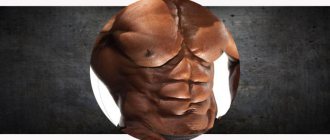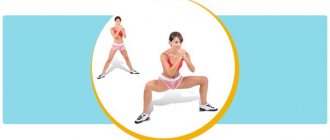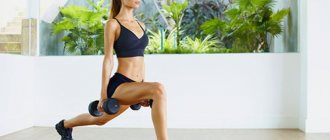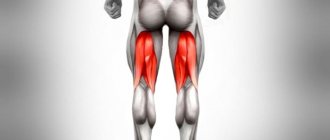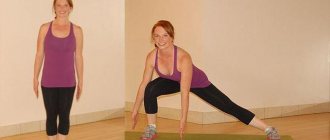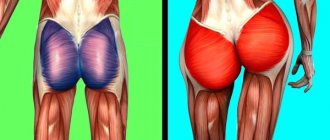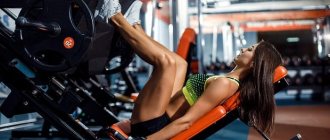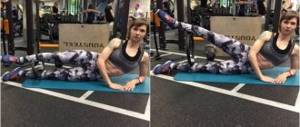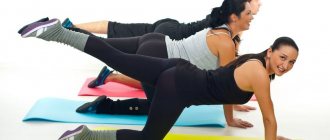The thigh is the initial part of the leg. Limited by ligaments:
- inguinal (above),
- gluteal (behind),
- a line conventionally drawn 5 cm above the kneecap, or patella (below).
The thigh muscles are one of the largest muscles in the human body. They bear the load of holding the torso and provide the ability to move it in space.
The muscle tissue of the femoral region is divided into several groups:
- anterior (flexors),
- posterior (extensors),
- medial medial (femoral adductors).
The anatomical structure and innervation of the region is complex. This ensures the ability to safely perform motor functions.
The structure and location of muscle fibers is considered by medical topology.
Channels in muscle tissue
In the muscles of the zone under consideration, between the layers of the fascia lata - superficial and deep - there is a femoral canal. There are two holes in it:
- The upper one passes through the broad medial muscle and the long adductor muscle, its lower end connects to the lower adductor foramen.
- The lower (deep) is directed inside the inguinal ligament, separated by it in front, by the femoral vein on the outside and by the ridge vein in the back.
Sensitive nerve fibers and large blood vessels (femoral vein, artery of the same name and saphenous nerve) pass through them.
Anterior thigh muscle group
The extensor muscles (extensors) are located on the front surface of the thigh. Their main task is to straighten the limb.
Quadriceps femoris
The synonymous name for this muscle is quadriceps. It is located on the anterior lateral surface and has the appearance of a complex fiber consisting of four muscles:
- straight,
- lateral,
- medial,
- intermediate.
In the anterior group, all tissues have separate heads, connecting into a single tendon that goes below. It comes up to the femur and attaches to the patella. Below the knee it flows into the patellar ligament, extends to the lower leg and attaches to the iliac tuberosity.
The functions of the quadriceps muscle include extension of the thigh and lower leg at the knee joint.
Vastus lateralis muscle
Covers the outer lateral part of the thigh (stretches from the hip joint to the knee) and is included in the quadriceps muscle. Provides the ability to straighten the leg and do squats.
Vastus medialis
Comes from the rough line of the thigh. It looks like a thick and flat muscle fiber stretching along the back of the femoral area. Its lower end passes forward to the knee joint.
Thanks to the work of the medial thigh muscle group, it is possible to jump, squat, and lunge with the leg in all directions.
Vastus intermedius muscle
A thin plate separating the lateral and medial muscles and overlappingly covered by them below. Above it is the rectus muscle.
Serves to perform a function similar to that characteristic of the previous muscles.
Rectus femoris muscle
The longest in the group, it covers all other muscles. At the top it is connected to the massive pelvic bone, at the bottom it is attached to the patellar ligament. It stands out well on the limb and forms its circumference.
Thanks to this fiber, a person is able to jump, squat, lift and pull his legs towards his body. It helps maintain balance.
Sartorius
A narrow, ribbon-shaped muscle that extends diagonally from the outside of the hip joint to the inside of the knee. The length of the element does not exceed 50 cm. It promotes flexion of the leg at the hip and bringing it closer to the stomach, abduction and rotation, and flexion at the knee joint.
The muscles of this group cover the upper surface of the thigh and are responsible for performing one of the most important tasks - straightening the limb at the knee.
Muscles of the anterior thigh
Published: September 15, 2014
15462
0
Font
A.A.
No time to read?
After analyzing the muscle groups of the chest, back and shoulder girdle, we move on to the legs. Since the legs are the largest muscle group, it makes sense to consider the front and back of the thigh separately. So, let's go!
The main muscle of the front thigh is the quadriceps. It is so called because it consists of four separate muscles:
- rectus femoris muscle;
- vastus lateralis;
- vastus medialis;
- vastus intermedius muscle.
Look at these muscles in the picture. The latter is difficult to see, since it is located under the rectus femoris muscle. These muscles unite into one common tendon and attach to the patella.
And since the main function of the quadriceps femoris muscle is to extend the leg at the knee, the best exercises that develop this muscle are squats and lunges , which straighten our legs.
I'll be honest, I think squats are the best exercise for the lower body, as well as pull-ups for the upper body. Many people say that they don't like squats (as well as pull-ups

